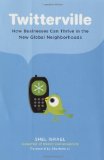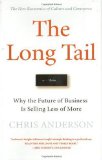PRMeetsMarketing Weekly Articles: October 18, 2022
Here are the weekly articles that I found interesting. There were so many that I’m posting a day early. I may revise my schedule to get this up on Thursdays instead of Fridays, because frankly, I can think of better things to do on my Friday. Here you go:
Hello, hello hello? Andy Beal of MarketingPilgrim points out the problem with the multitude of top blog lists and the risk of creating an echo chamber of self-importance.
All a Twitter B.L. Ochman provides some great reasons why marketers should consider Twitter. As she highlights, it’s important to give as much as take for any tool you use. Alternatively, David Berkowitz writes on Search Insider that maybe listening to Twitter is more important than participating. The issue is, do marketers really listen? =)
When Advertising Isn’t Marketing I just started reading David Meerman Scott and I don’t know why I didn’t start earlier. David points out the Forrester’s recent interactive marketing report if focused on the old rules of marketing versus the new rules. Check out David’s perspective on what new marketing means.
Don’t Be an Ugly American – Crossing Cultural Boundaries Ann Holland of MarketingSherpa provides an interesting look on crossing cultural boundaries for blogging. And who knew that she’s blogging from Serbia!
Fox Pisses Off Blood Thirsty Fans For fans of Buffy the Vampire TV series, you’ll love CK’s recent post about how Fox just pissed off tons of fans by serving a desist order for a sign along event. And you haven’t seen it, it’s one of the best TV episodes that’s been copied by other shows.
Trucking Down the Brand Fast Lane – Does Waggener Edstrom Have the Answer? KD Paine’s PR Measurement Blog had a quick post about this article in AdWeek. Waggener proposes an interesting brand management concept by visually mapping key words and their prospective impact on your company’s stock price.
Tracking Your Online Videos Michael Pick writes an interesting review of Tube Mogul for MasterNewMedia. For anyone trying to start a video marketing campaign, Mike outlines the pros and cons of Tube Mogul’s service. The cool part? Submit your content to several video sharing sites while getting an analytics overview. Now where are those old salsa videos…Disclosure: My company has a service that shares videos, podcasts, webcasts and online demos. Though not directly competitive, I felt it was important to disclose this.
Another Sign of Web 2.0 Exuberance? The New York Times ran a story about the Silicon Valley’s fuzzy math. So add fuzzy math to my list of signs that the Web 2.0 Exuberance is upon us. And Brad Stone outlines a conversation with Carlot Perez, who provides a historical look at tech bubbles and busts.
PR Folks Starting to Get Bloggers? Robert Scoble had an interesting post about PR folks gaming Techmeme. What interested me more about his post was how he highlighted some interesting way to get bloggers’ attention, both proactive and reactive. But then again, he was massed email press releases. I don’t know – emailing press releases to a blogger you know or don’t know doesn’t seem to be the right way to approach bloggers. Food for thought.
Technorati Tags: advertising blogging marketing Social media Web 2.0 Exuberance Weekly Articles
Party Like It’s 1999: Web 2.0 Exuberance?
Lately I’ve been feeling a case of deja vu. Industry Standard is being resurrected. The umpteenth company being funded for video sharing, online video, social networking – select the focus and someone’s funding it. Here are the Top 7 Signs of the Web 2.0 Exuberance – the replay of the dot.com days?:
1. Though the valuations may be lower, it’s eery how most start-up seem to have business plans based on – advertising.
2. And if the business plan isn’t based on advertising, then the hope is … acquisition. Previously the company of choice was Microsoft, now the likely dream company is Google or maybe even Cisco.
3. High flying IPOs anyone? VMware, Compellent are just the beginning. Maybe this time, these companies have actual revenues and strong business numbers backing them. Question is, will the next ones be as financially sound?
4. During the dot.com boom and bust days, I saved money on alcohol and food with all the launch parties, cocktail events and other networking events. Now we have the LinkedIn lunch events, Ignite by O’Reilly (by the way I’ll be at the Ignite SF event on Oct. 16) and others.
5. If the answer to “What does your company do?” is Web 2.0, social networking or video, then you might be part of the Web 2.0 Exuberance. This is the new catch phrase whereas the previous hot answer was “my company is taking a brick & mortar model (remember that phrase?) to the Internet.” 5.a Your hipness factor is based on where you’re working. If you’re not doing Web 2.0 or social networking, forgetaboutit.
6. High flying companies going belly up. Not yet but TechCrunch is doing a good job with their dead pool. Takes me back to the days of f*cked company
7. VCs are hot again. Need I say more?
Give me your take. Are there other signs of the past?
Technorati Tags: dot com boom and bust Social media social networking Web 2.0
PRMeetsMarketing Weekly Articles: October 12, 2022
I’ve been thinking about ending the week on articles that I find interesting throughout the week. Hopefully, you’ll find them useful for your PR and marketing efforts. I welcome any recommendations that you have to make this a useful list of articles. I will categorize this under Weekly Articles so you can just skip to the summaries in the future. Here we go:
Why CEOs Should Be Careful about Blogging
Jeremiah Owyang discusses the challenges of writing a CEO Blog. Jeremiah highlights the key points about why CEOs should be careful before starting a blog, from time, cool factor, to just being plain boring.
Perils of When Marketing Buzz Hits Reality of Customer Service and Product Quality
Marketing Pilgrim highlights the perils of Apple’s reputation based on recent goofs and whether this will impact Apple’s marketing machine.
Using Social Media to Raise Money
B.L. Ochman gives a refreshing look at how one nonprofit organization raised $1 million in 4 weeks. That’s more than some for-profit start ups out there!
Falling Technorati Links – What’s the True Picture?
Mack Collier at The Viral Garden writes about the decrease in links on Technorati. Is this a good barometer of authority when twitter, Facebook and other types of incoming links are not being counted? Interesting question for our reliance on Technorati for pointing us to “popular” blogs for PR and marketing outreach.
The Multiple Faces of Social Networking
I previously wrote about managing my online reputation here and here. Max Kalehoff posted to the OnlineSpin about this growing social network illness and what needs to be done to “cure” it. From a marketing perspective, the question I constantly ask myself is which network should you participate in, monitor or just plain ignore?
Technorati Tags: Weekly Articles PR Public Relations Marketing Social Media
Top Ten Questions for Sweepstakes … Marketing Pilgrim
So I just started reading Marketing Pilgrim and by telling them why I like them, I have a chance to win $500. This got me thinking about the value of sweepstakes or promotions. Frankly, I never used to be a sweepstakes person, but when I won a trip to London last year, I can’t get enough.
Whether it’s Home Depot surveys or putting my business card into a fish bowl, I seem to be drawn to it. Sweepstakes, as a marketing tactic, can be great for driving tons of people to your promotion, but what is the value to your company?
Before I highlight why I like reading Marketing Pilgrim, here are My Top 10 Questions for Sweepstakes Promotions that you should consider before engaging in one:
1. How does the promo/sweepstakes positively tie back to your company, messages and/or product?
2. Which is more important, the number of people who register for your promo or the quality?
3. Is the goal brand awareness or lead generation?
4. Once you have people registered, do you have a program in place to convert them into customers?
5. And if they do become customers, how do you maintain a long-term relationship versus the short burst from the promo?
And if your PR agency recommends a sweepstakes or promo, here are additional questions to consider:
6. How will the PR team measure the success (short and long-tem) of the initiative?
7. Who’s doing the work – the PR folks or you, the marketing team?
8. How much will this cost to do?
9. How will you manage this program with the month-to-month activities?
10. Besides doing the promotion to get eyeballs, which media outlets or blogs will write about this?
Now back to Marketing Pilgrim. I read them because they really do get it. For example, their $500 promo directly appeals to readers to explain why they like reading the blog and the money is a token of appreciation. This benefits both sides with increased awareness, while giving me food for thought for my posting. They have a good sense of humor while providing nuggets of wisdom for my personal blogging and my day job. And they’re prolific – I know that no matter when I check my Google Reader, there is something I can read. It’s not fluff but relevant to me.
What else can I say?
Technorati Tags: marketing Marketing Pilgrim pr promotions public relations sweepstakes
"I, Borg. I, Cece"
In the world of an agency, the mentality is one of the Borg. The goal is to highlight team achievements and not individualistic ones. From an agency perspective, this is practical so no one person becomes integral to an account. If one person leaves, it minimizes impact to the collective.
In the classic Star Trek: Next Generation “I, Borg” episode, a single borg is separated from his collective and learns to exist as an individual. His seminal moment is stating, “I, Borg” – the point when he no longer refers to himself as part of a group but as an individual.
Like Hugh, I left the comfort of the agency collective when I went in-house. I’m not saying individual responsibility was overlooked in an agency. It’s just the client may not be aware of which team member was directly responsible for the achievement. After spending most of my career at an agency, the change in mentality is difficult to adjust to.I’ve noticed how this has impacted my work in three ways:
1. No Hiding: Now, I’m keenly aware of how my individual contributions are being evaluated and measured. Every decision, media placement, customer case study and press release directly reflects on me. There is no we, it’s only me. There’s no one to hide behind.
2. Better Decisions on Media Outreach: I am more attuned to which media placements drive traffic to my website based on Google Analytics. And when there is a call to action for my media activities, I can add source codes to link to track traffic and measure results. Based on this, I can determine how much effort to put into one media outlet versus another. Not an exact science, but useful information nonetheless, especially if queried about which outlets to focus on.
3. The Value of I: I’m learning how to slowly drop the “we” for “I.” Again, don’t get me wrong, I do acknowledge when things are a team effort. But I also have to recognize when and how to take individual responsibility for my work. Understanding the “value of I” is very key for moving beyond the agency world.What do you think? I would love to hear from others who have made the transition – either to in-house or to an agency.
Multiple Personalities: Balance Between Personal and Work Identities
I previously wrote about how to manage my online reputation. My challenge was how to keep my professional and personal personalities separate. Yes, yes you can say that they are the same but there are reasons to keep them separate. For me, ths is important when commenting on blogs for personal and company reasons.
My company doesn’t have a corporate blog but I have this blog. Yet, part of my day-to-day job is to monitor blogs and when apppropriate comment or contact bloggers. And when I do outreach, I definitely try to abide by the rules of blogging.
For me, I feel a need to differentiate between when I comment based on my personal perspectives and as an official spokesperson of my company. Here are my Four Rules for Managing Multiple Personalities that I follow:
1. In identifying who I am on posts, I use “Cece Salomon-Lee for my company name” to identify my role as a spokesperson for my company.
2. If I’m commenting personally, I don’t use that identifier – just my name, while using my personal email and blog as ways to reach me.
3. In the content of the post, I also try to clearly outline that this is my company’s position.
4. When I email a blogger directly, I clearly send the email from my personal or work email to keep the correspondence separate.
The balance I try to keep is when a connection from my blogging or personal comments can be relevant for my day job. So far, it hasn’t been too much of an issue to keep my multiple personalities separate. What do you think? Am I being to black and white in how I manage my reputation online?
Sincerity: Tom Pick’s Response
Tom Pick of WebMarketCentral contributes his thoughts about the role of sincerity in social media:
“The secret of acting is sincerity. If you can fake that, you’ve got it made.” — George Burns
Okay, seriously, sincerity is critical. I think you’re aware of some recent examples where people tried to blog pretending they were someone they were not – and got busted for it. I make it very clear who I am and where I’m coming from, and that I don’t take money for blogging. So if I write that I think something is cool, I really think that. Sincerity and authenticity go hand-in-hand, and transparency is what helps readers verify those
characteristics.
About
Favorite Service
Recent Comments
- on Going Virtual Isn’t Necessarily the Answer to Replacing Your Physical Events
- on Going Virtual Isn’t Necessarily the Answer to Replacing Your Physical Events
- on Going Virtual Isn’t Necessarily the Answer to Replacing Your Physical Events
- on Going Virtual Isn’t Necessarily the Answer to Replacing Your Physical Events
- on Going Virtual Isn’t Necessarily the Answer to Replacing Your Physical Events
Ads by Google
Favorite Books
Marketing Blogs
PR Blogs
- KD Paine's Measurement Blog
- Micro Persuasion
Virtual Events & Meetings Blogs
- Cisco Virtual Environments
- It's All Virtual
- The Webinar Blog
- Virtual Edge Institute

 Follow
Follow
 Cece Salomon-Lee is director of product marketing for Lanyon Solutions, Inc. and author of PR Meets Marketing, which explores the intersection of public relations, marketing, and social media.
Cece Salomon-Lee is director of product marketing for Lanyon Solutions, Inc. and author of PR Meets Marketing, which explores the intersection of public relations, marketing, and social media. 


